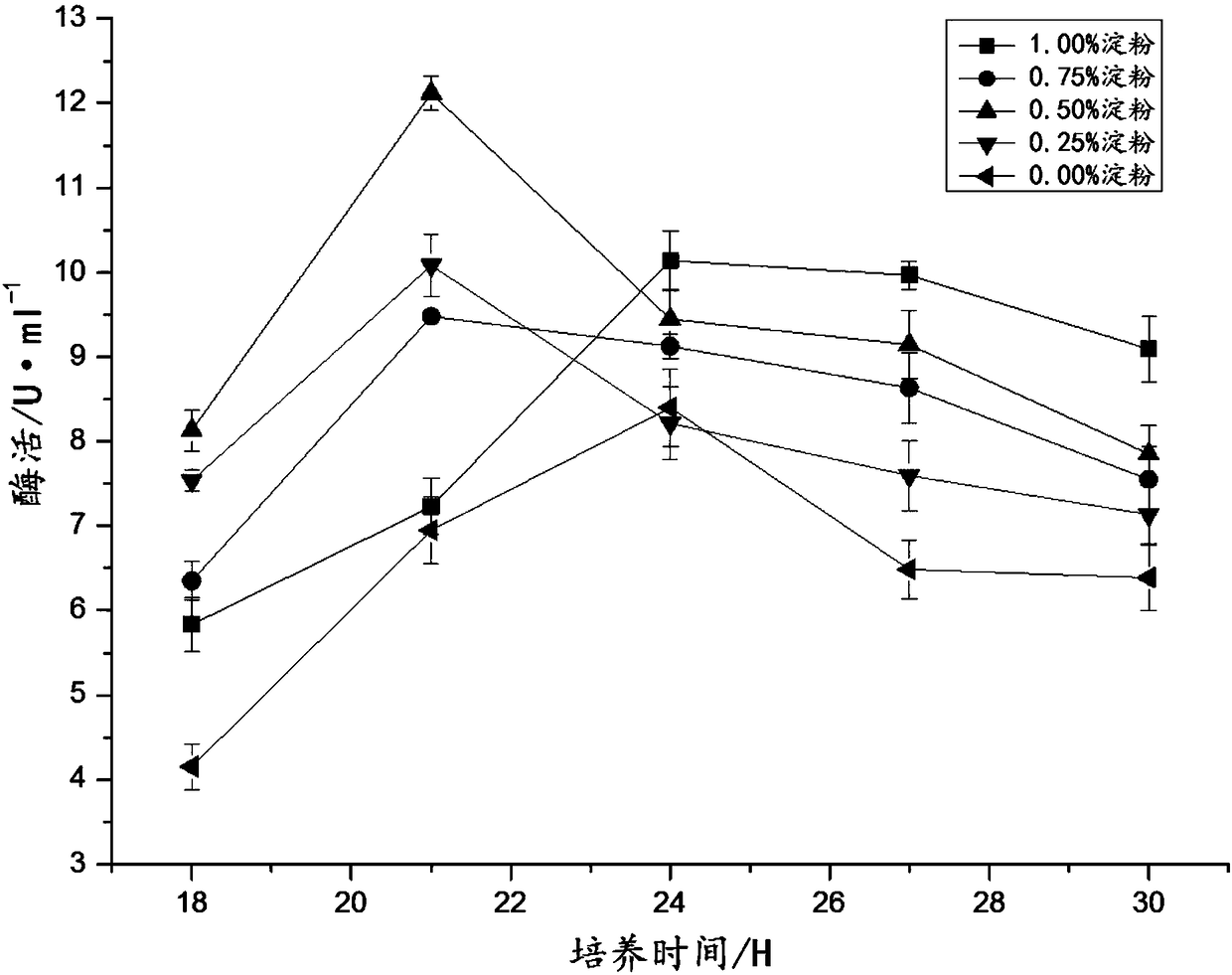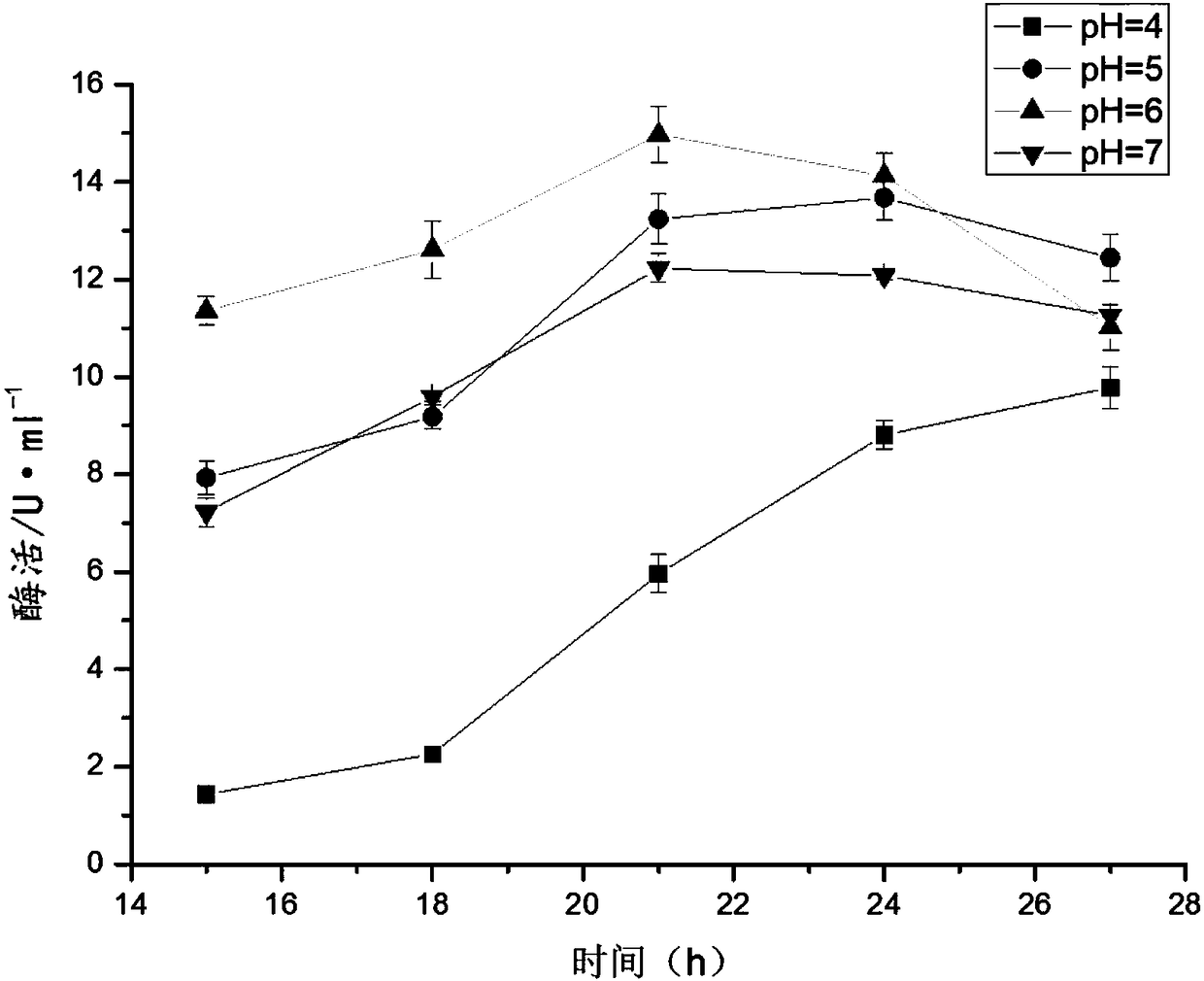Lactobacillus plantarum with high yield of amylase and applications of lactobacillus plantarum
A technology of Lactobacillus plantarum and amylase, applied in the directions of Lactobacillus, application, bacteria used in food preparation, etc., can solve problems such as low efficiency
- Summary
- Abstract
- Description
- Claims
- Application Information
AI Technical Summary
Problems solved by technology
Method used
Image
Examples
Embodiment 1
[0038] Example 1: Isolation, screening and identification of plantarum lactobacillus with high amylase production
[0039] 1. Preparation medium:
[0040] (1) MRS liquid medium: peptone 10.0g / L, beef extract 8.0g / L, yeast extract 4.0g / L, glucose 20g / L, Tween 80 1.0ml / L, anhydrous dipotassium hydrogen phosphate 2.0 g / L, sodium acetate (3 crystal water) 5.0g / L, triammonium citrate 2.0g / L, magnesium sulfate (7 crystal water) 0.2g / L, manganese sulfate (4 crystal water) 0.05g / L. Adjust the pH to 6.0-6.4, and sterilize at 121°C for 20 minutes.
[0041] (2) MRS solid medium: add agar powder 18.0 g / L on the basis of the components of MRS liquid medium.
[0042] (3) MRS-1% starch liquid medium: peptone 10.0g / L, yeast extract 4.0g / L, Tween 80 1.0ml / L, anhydrous dipotassium hydrogen phosphate 2.0g / L, sodium acetate (3 crystallization Water) 5.0g / L, diammonium citrate 2.0g / L, magnesium sulfate (7 crystal water) 0.58g / L, manganese sulfate (4 crystal water) 0.25g / L, soluble starch 10.0g / ...
Embodiment 2
[0061] Embodiment 2: the enzymatic characteristic of plantarum lactobacillus (CGMCC No.14177)
[0062] 1. Determination of enzyme activity: DNS method (dinitrosalicylic acid method)
[0063] Preparation of the standard curve: configure maltose standard solutions of 0.1, 0.2, 0.3, 0.4 and 0.5 mg / mL, and measure the absorbance at a wavelength of 540 nm. With the maltose concentration as the abscissa and the absorbance as the ordinate, draw the maltose standard curve.
[0064] Determination of enzyme activity curve:
[0065] 1% starch PBS buffer solution: Prepare 0.05 mol / L disodium hydrogen phosphate and 0.05 mol / L sodium dihydrogen phosphate respectively, mix and adjust the PBS buffer solution to pH 7 at 25°C. Take 1g of starch, add a small amount of PBS buffer solution, heat and stir in a water bath to make it fully dissolved, then transfer it to a 100mL volumetric flask, dilute to 100mL with PBS buffer solution, and set aside.
[0066] Take the cultured bacterial solution,...
Embodiment 3
[0077] Example 3: The probiotic effect of Lactobacillus plantarum (CGMCC No.14177)
[0078] 1. Research on acid resistance of bacterial strains
[0079]Adjust with hydrochloric acid, prepare MRS liquid medium with pH of 2, 3 and 7 respectively, take 150 μL of the above-mentioned medium and add it to a 96 microwell plate, and add 2 μL of bacterial solution cultivated for 18 hours at the same time, culture anaerobically at 37°C for 48 hours, and take samples every hour Determination of OD of culture medium 600 value, see Image 6 . The results showed that the strain could grow slowly under the condition of pH 3; but under the condition of pH 2, the strain could not grow.
[0080] 2. Research on Bile Salt Resistance of Bacterial Strains
[0081] MRS liquid medium with pH 7 and bile salt concentration (w / v) of 0%, 0.3% and 0.6% were prepared. Take 150 μL of the above-mentioned medium and add it to a 96-microwell plate, and add 2 μL of the bacterial solution cultured for 18 ho...
PUM
 Login to View More
Login to View More Abstract
Description
Claims
Application Information
 Login to View More
Login to View More - R&D
- Intellectual Property
- Life Sciences
- Materials
- Tech Scout
- Unparalleled Data Quality
- Higher Quality Content
- 60% Fewer Hallucinations
Browse by: Latest US Patents, China's latest patents, Technical Efficacy Thesaurus, Application Domain, Technology Topic, Popular Technical Reports.
© 2025 PatSnap. All rights reserved.Legal|Privacy policy|Modern Slavery Act Transparency Statement|Sitemap|About US| Contact US: help@patsnap.com



